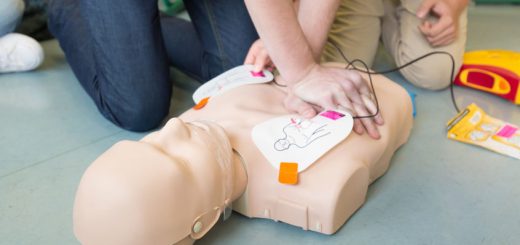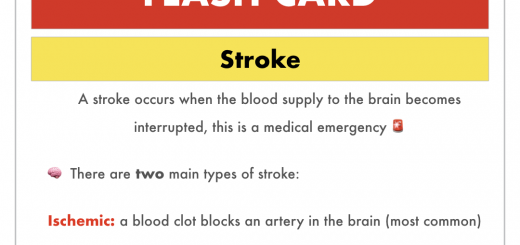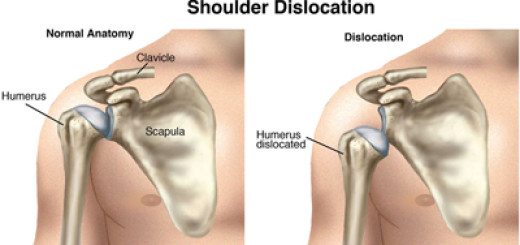What Are Gauze Pads Used For in a First Aid Kit?
In any emergency, having the right tools on hand can make all the difference, and gauze pads are the overlooked saviors of first aid kits.
These seemingly simple pieces of woven or non-woven cotton are versatile and essential tools in any first-aid kit. They are crucial for treating wounds, controlling bleeding, and preventing infection.
The material used in gauze pads makes them highly portable and convenient to carry anywhere. Their adaptability and ease of use make them indispensable in both everyday accidents and unexpected emergencies.
Discover how these simple yet powerful medical supplies play a vital role in keeping wounds clean, safe, and on the path to healing.
This article explores the various uses of gauze pads in a first aid kit and highlights their importance in wound care.
Types of Gauze Pads
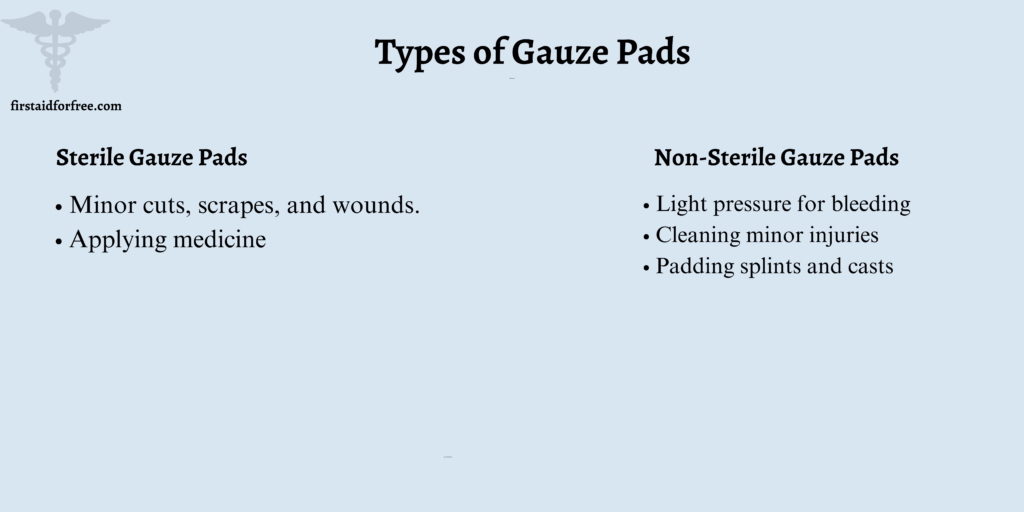
Gauze pads, those absorbent squares you find in most first-aid kits, might seem simple. But there’s actually more to them than meets the eye! Let’s know about two main types of gauze pads and when to use each one:
Sterile Gauze Pads
Sterile gauze pads are the superheroes of the bunch. They are packaged in a sealed pouch to keep them free of any dirt or bacteria.
They can be used for:
- Minor cuts, scrapes, and wounds: These pads can absorb blood and other fluids, keeping the wound clean and promoting healing.
- Applying medicine: Got an ointment or cream prescribed by a doctor? Sterile gauze pads are the perfect tool to apply gently without contaminating the wound.
Sterile means clean! These are the only types of gauze pads you should use directly on open wounds to minimize the risk of infection.
Non-Sterile Gauze Pads
Non-sterile gauze pads haven’t gone through the same sterilization process as sterile ones. This means they might hold some uninvited guests, such as tiny germs.
So, while they can’t be the main protectors of your wound, they can still be helpful in other first-aid situations:
- Light pressure for bleeding: If you have a minor scrape with a little blood, a non-sterile gauze pad can be used to apply gentle pressure and slow down the bleeding.
- Cleaning minor injuries: If you have a small, clean scrape and no sterile pads available, a non-sterile pad can be used to wipe away dirt or debris. But remember, be extra careful and clean the wound thoroughly with soap and water afterward.
- Padding splints and casts: Non-sterile gauze pads can be used for some extra cushioning under a splint or cast for added comfort.
While non-sterile pads can be helpful in certain situations, never use them directly on open wounds, especially deep wounds or animal bites. These situations require sterile care and a visit to the doctor.
How to Use Gauze Pads
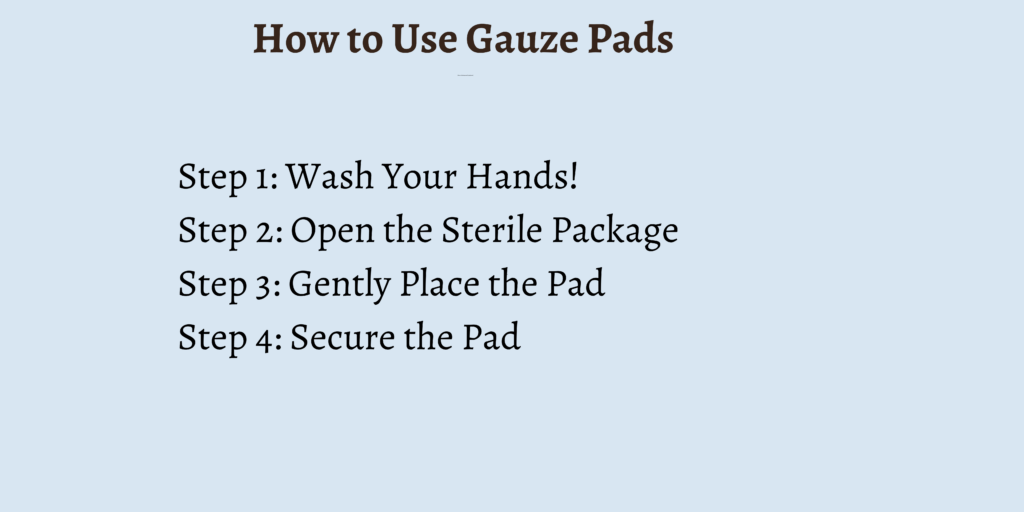
So, you’ve got a minor cut and have a pack of gauze pads in your first-aid kit. Now what? Here’s a step-by-step guide on how to use a gauze pad effectively:
Step 1: Wash Your Hands!
This might seem obvious, but it’s incredibly important. Germs love to stay on dirty hands, and the last thing you want is to introduce them to your wound. Wash your hands thoroughly with soap and warm water for at least 20 seconds. Don’t forget to scrub under your nails and between your fingers.
Step 2: Open the Sterile Package
Remember those sterile gauze pads we talked about earlier? Here’s where keeping them comes in handy. Even the packaging is designed to keep the pad clean.
Look for the sealed edges of the package. Carefully tear them open without touching the inside of the pouch.
Step 3: Gently Place the Pad
Now comes the part of applying the gauze pad to your wound.
- Use only the edges: Hold the gauze pad by the edges, the part that won’t be touching your wound.
- Direct placement: Carefully place the gauze pad directly on the wound.
Step 4: Secure the Pad
The gauze pad needs a good friend to stay put and protect the wound. This is where bandages or wraps come in.
Use adhesive bandages or a roller bandage to secure the gauze pad in place. Make sure the bandage is secure but not too tight, allowing for proper blood circulation.
If you’re dealing with a deep wound or heavy bleeding, don’t mess around with gauze pads! Apply gentle pressure with a clean cloth and seek medical attention immediately.
Additional Considerations
While gauze pads are handy little helpers, there are some situations where they’re not the best choice. Important things to keep in mind:
- Major Injuries: Deep cuts, puncture wounds, and anything with heavy bleeding need professional medical attention. Gauze pads can’t handle these situations, so get yourself to a doctor or hospital as soon as possible.
- Animal Bites: Animal bites carry a high risk of infection, and sterile gauze pads alone won’t be enough. Seek medical attention right away to clean the wound properly and get any necessary treatment, like antibiotics.
- Burns with Blisters: Burns with blisters are delicate and can easily become infected. Gauze pads can stick to the blisters and cause further damage. Use cool compresses and seek medical attention for proper burn care.
Keeping Your Gauze Pads Ready for Action:
- Storage Matters: Gauze pads absorb moisture easily. To keep them effective, store them in a cool, dry place away from direct sunlight. A cupboard or drawer in your bathroom is a good option, as long as it’s not too humid.
- Packaging: Gauze pads come in sealed packages to keep them sterile. Once you open a package, the sterility is compromised. So, only open what you need and keep the remaining pads sealed in their original packaging.
- Airtight: If you need to store opened gauze pads for a short period, consider keeping them in an airtight container to minimize contamination.
- Disposal: Used gauze pads can be a breeding ground for germs. After use, dispose of them in a covered trash bin.
It’s always better to use a fresh, sterile gauze pad than risk introducing bacteria to your wound
FAQs
Are all gauze pads the same?
No! There are sterile and non-sterile versions. Sterile ones are for open wounds, while non-sterile pads are better for light pressure or cleaning around the wound (with caution!).
How do I use a gauze pad?
Wash your hands first! Then, open the sterile package without touching the pad. Gently place the pad on the wound and secure it with a bandage.
When shouldn’t I use a gauze pad?
Gauze pads are not recommended for deep wounds, animal bites, or burns with blisters. Seek medical attention for these!
Can I reuse gauze pads?
No! Gauze pads are for single use only. Once used, they can carry bacteria and increase your risk of infection.
Conclusion
Gauze pads might seem like a simple first-aid kit item, but understanding the different types and how to use them properly is essential to care for minor injuries.
Remember, keeping sterile gauze pads on hand and knowing when to use them can help you promote healing and prevent infection. So, stock your first-aid kit and be prepared for those little bumps and scrapes!

